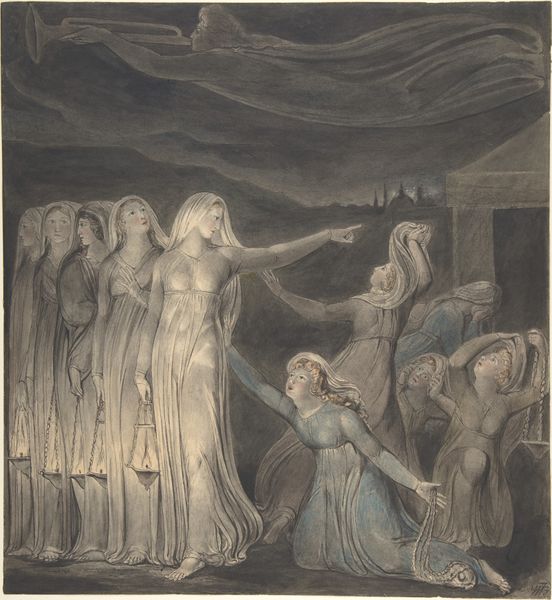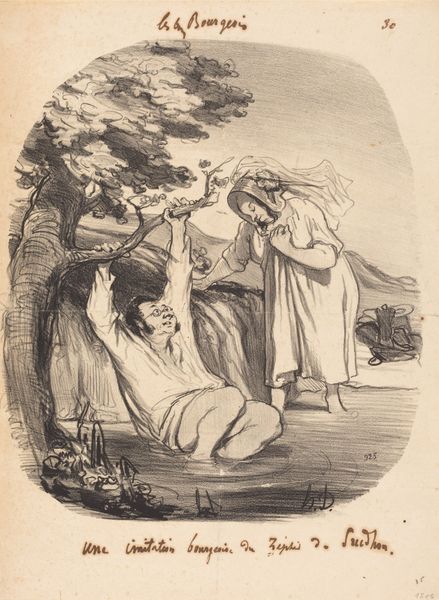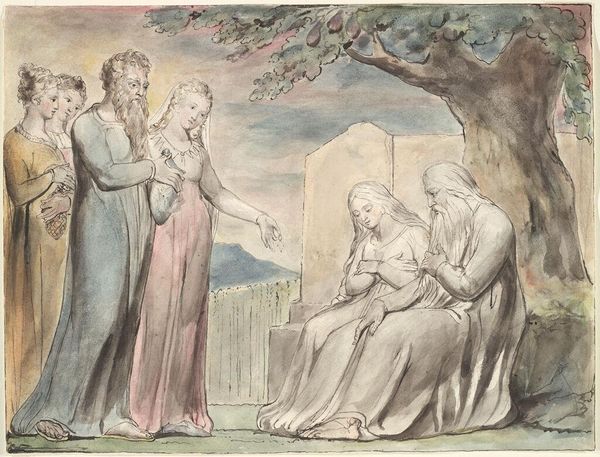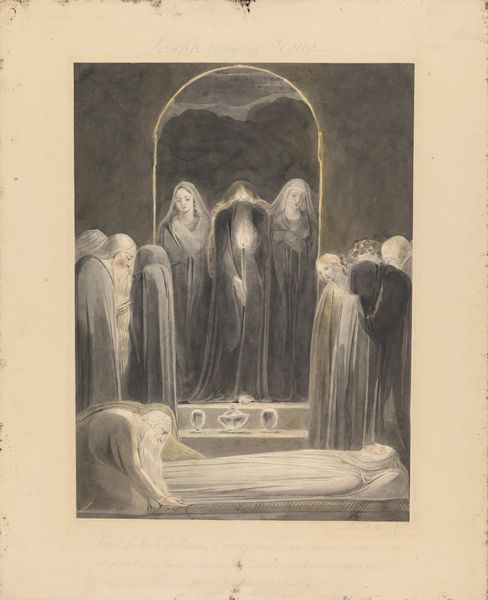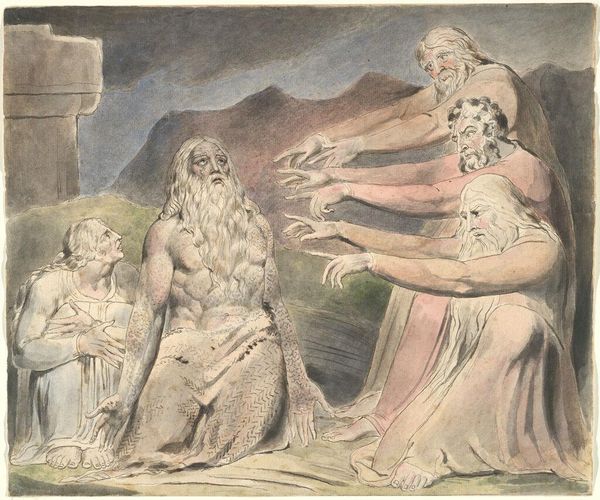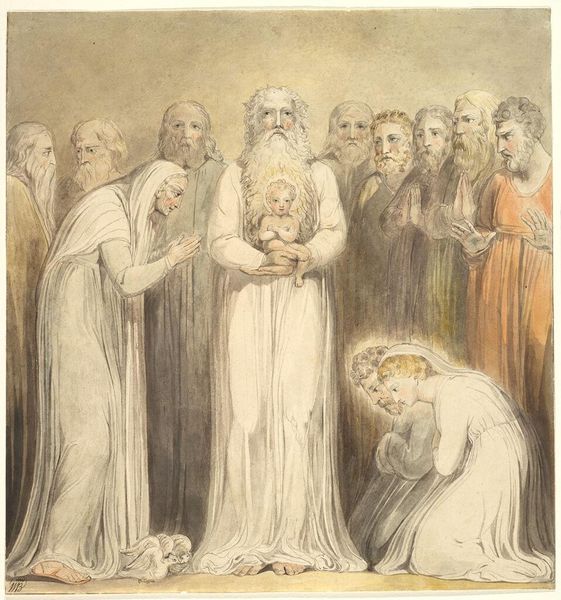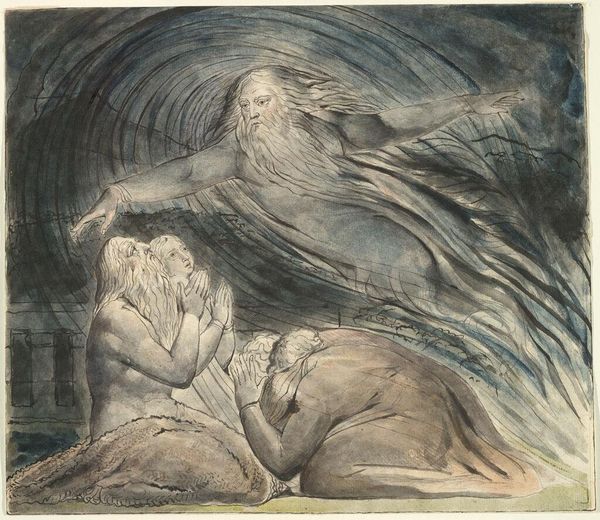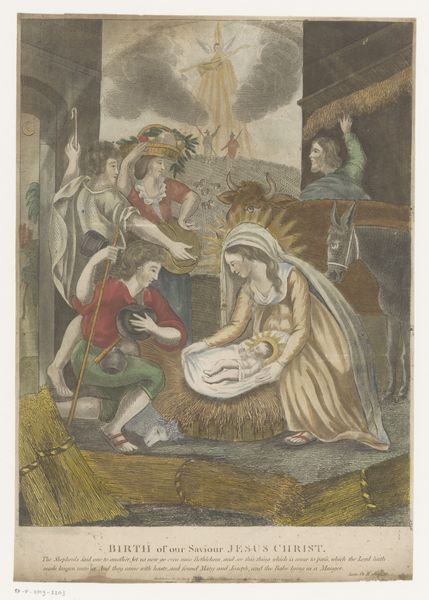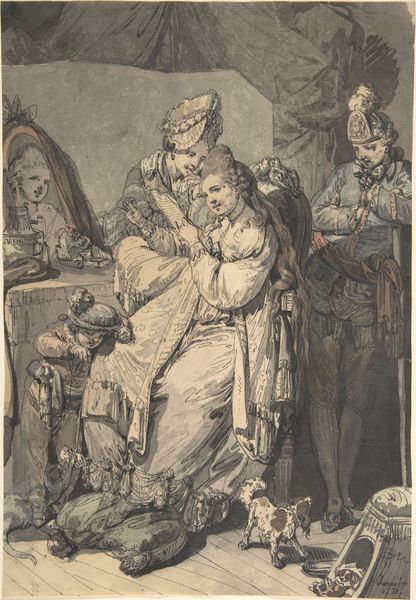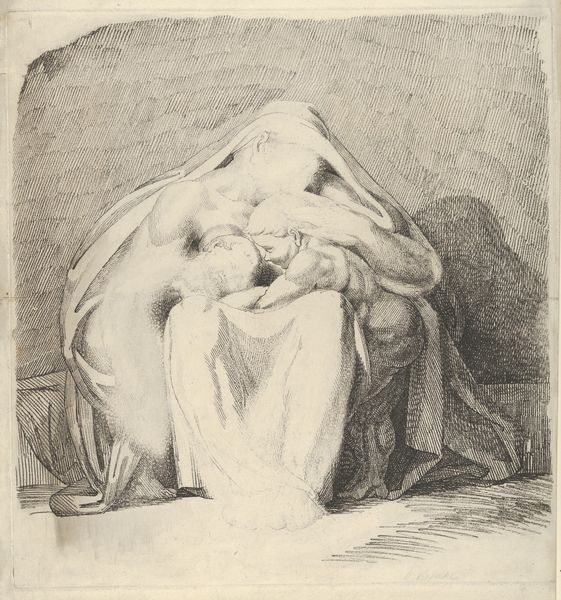
Tiriel and his Children; verso: Female Figure with the Head of a Horse c. 1789
0:00
0:00
Dimensions: 12.2 x 9.8 cm (4 13/16 x 3 7/8 in.)
Copyright: CC0 1.0
Editor: Here we have William Blake’s “Tiriel and his Children.” It’s undated, but rendered in watercolor. It feels somber, almost oppressive. What strikes you when you look at this work? Curator: It’s a powerful image of patriarchal authority, isn't it? Blake often critiqued rigid power structures. Consider the figures' postures: the daughters are literally kneeling, heads bowed. What does that visual subordination communicate to you about gender roles and power? Editor: It definitely highlights the disempowerment of the female figures within that structure. Is it a commentary on societal norms of his time? Curator: Precisely. Blake used mythology to challenge contemporary social and political landscapes. His art becomes a form of resistance. Perhaps it’s time we consider how these power dynamics continue to echo today. Editor: That’s a really interesting perspective. I hadn’t thought about it in terms of contemporary power structures. Curator: It shows how we should never stop asking questions about the art we view and how they connect to issues of equity.
Comments
No comments
Be the first to comment and join the conversation on the ultimate creative platform.
